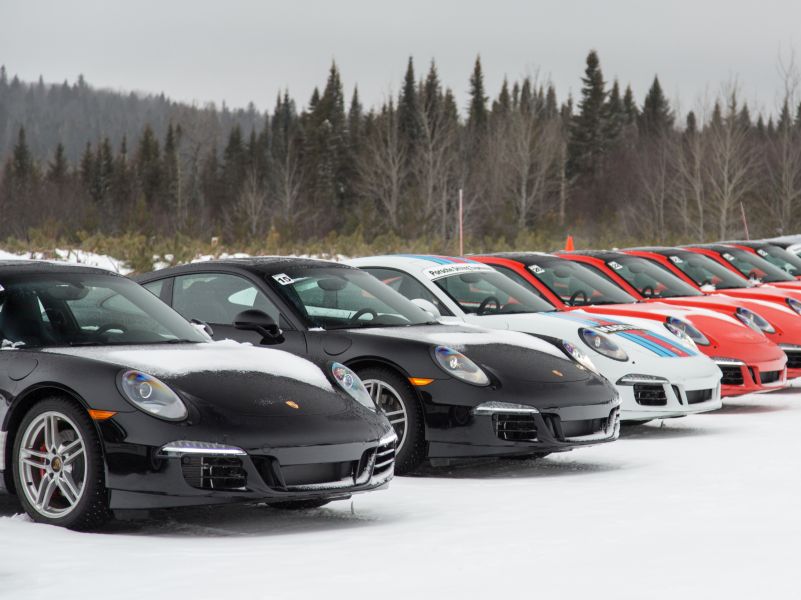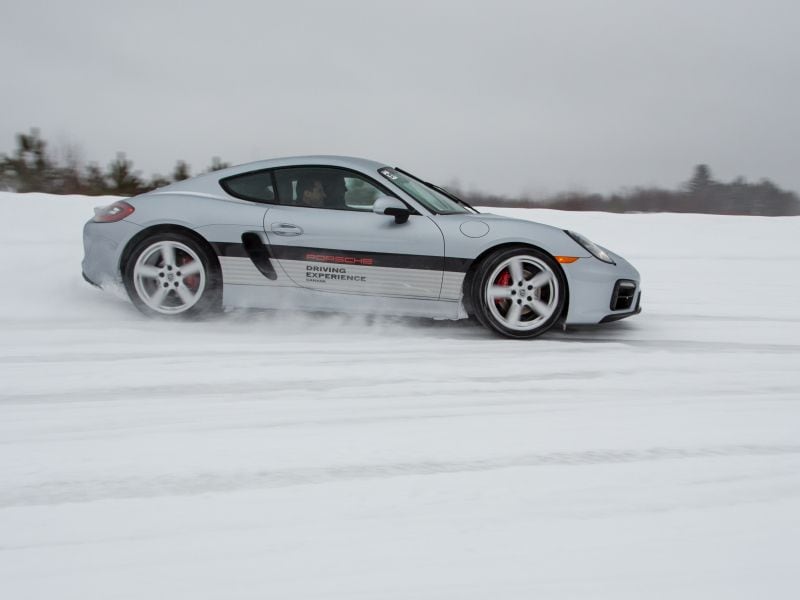Recent Articles
Popular Makes
Body Types
Porsche Camp4: Building Better Winter Drivers

Line Of 2016 Porsche 911 Carrera GTS ・ Photo by Porsche
If there's one thing that terrifies most people about winter driving, it's the fear of sliding sideways at a high rate of speed on an ice-slicked road. Why, then, is that exactly what the instructors at Porsche Camp4 had me doing during the course of an entire day spent behind the wheel of an array of powerful sports cars? The difference between terror and triumph - at least when it comes to surviving a season in the white stuff - is one simple concept: control. Porsche Camp4 was designed from the ground up to imbue the brand's owners with the confidence and skills needed to handle the most treacherous of conditions, providing them with technique that they could easily export from the closed confines of the Mecaglisse rally school to the open roads and urban lanes that make up their daily lives. Camp4 has been churning out better drivers all over the world for many years, with American, Canadian, and European chapters covering all of Porsche's most crucial markets. After spending eight hours going through a compressed version of the multi-day coaching experience, I emerged with a fresh respect for the capabilities of Porsche's world-class performance cars in some of the most challenging driving situations imaginable.
2016 Porsche Cayman GTS: Mid-Engine Mastery
Of the trio of vehicles laid out before the group of journalists who attended this year's edition of Porsche Camp4, the 2016 Porsche Cayman GTS proved the most adept at illustrating why balance is such a key aspect of any performance platform. Featuring a 3.4-liter flat-six engine located just behind the driver, the coupe's center of rotation is perfectly positioned for neutral handling. With enough grip from the studded Nokian winter tires to set the car sideways through the corners, I had to work hard to keep the Cayman from re-orienting itself to the straight and narrow - its natural state of being. Gradually, as I turned in lap after lap on the ice course that had been designed specifically to test the Cayman GTS' limits of adhesion, I fell into the rhythm required to upset the car's chassis enough to not only break the rear wheels free with the throttle but also use the vehicle's momentum to initiate a drift. This latter point was driven home by the placement of an instructor just prior to the downhill entry-point onto a long, straight slalom - one that rewarded entry from a position that could only be achieved at an impossible diagonal angle that we were encouraged to achieve by transferring the weight of the car to the front wheels via a light tap on the brakes before initiating our turn.

2016 Porsche 911 Carrera GTS: Drift For Days
Momentum was also on the agenda once behind the wheel of the 2016 Porsche 911 Carrera GTS, but the mechanics required to achieve similar sideways results were entirely different from those employed in the Cayman. The Carerra 911 GTS features a 3.8-liter engine that offers more horsepower than the Cayman, and the 911 Carrera's trademark rear-engine design introduced entirely new physics into the equation.
Once again, weight would be transferred on a tight, uphill and downhill section of ice track, but this time a pylon chicane would require us to practice the "Scandinavian flick" in order to complete each lap. This maneuver demands that the driver feint to one side before initiating a turn to the other, a destabilizing maneuver that is particularly effective at shifting the rearward bias of the 911's weight so that it comes up alongside you. The key to the Scandinavian flick is catching the drift by counter-steering before the engine ends up in front of you and spins you 180 degrees. This sideways slide is also known as oversteer, and not only is it an effective method for quickly negotiating a slippery corner, but learning to react to an oversteer situation safely and effectively can often mean the difference between making it home in one piece and having to call for a tow out of a snowbank. There were several Porsche Cayenne SUVs on hand throughout the entire day to handle exactly these types of situations, and they were rarely not busy tugging overly enthusiastic attendees from white-out situations.

2016 Porsche Carrera 4 GTS: All Wheels On Deck
The 2016 Porsche Carrera 4 GTS offers winter-friendly all-wheel drive to its rear-engine mix, a mechanical detail that gives drivers an additional layer of control to call upon when negotiating frozen terrain. At Camp4, the Carrera 4 GTS proved that even on studded winter rubber, it was still possible to easily overpower the all-wheel drive system's grip on an iced-over skid pad, demonstrating that human mastery over physics often relies more on the amount of control in your right foot than it does on microprocessors and torque distribution. Still, the advantage of all-wheel drive when drifting the Carrera 4 GTS proved to be its ability to dig its front paws into the snow and pull the car out of its sideways orientation with a level of poise not available in the rear-wheel drive Porsche. Whereas the standard Carrera required careful planning to quickly parse a given set of super-slick corners, the 4 GTS was more forgiving of the occasional blunder in weight transfer.

Worth The Price Of Admission
Is it an absolute blast to spend the day driving someone else's sports cars across the frozen tundra at speeds that a lack of friction makes seem much faster than they actually are? Most definitely. More importantly, however, the one-one-one instruction available from Porsche Camp4 instructors is more valuable than any adrenaline rush provided by a close encounter or two with the local snowbanks. It's no exaggeration to say that the ability to react calmly and correctly in an emergency winter driving situation can often spell the difference between a safe drive home and disaster - and Porsche's Camp4 provides the kind of protected and controlled environment where earning the confidence necessary to execute out on the road rapidly becomes second nature.
